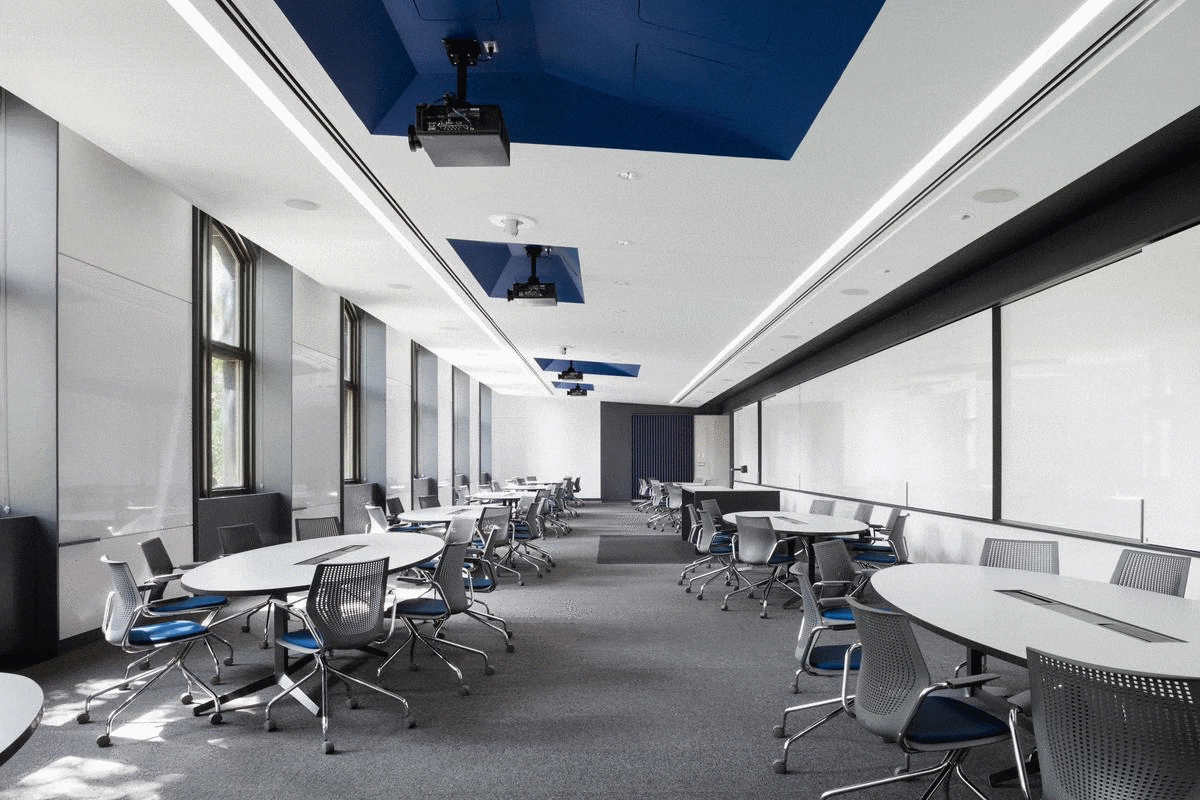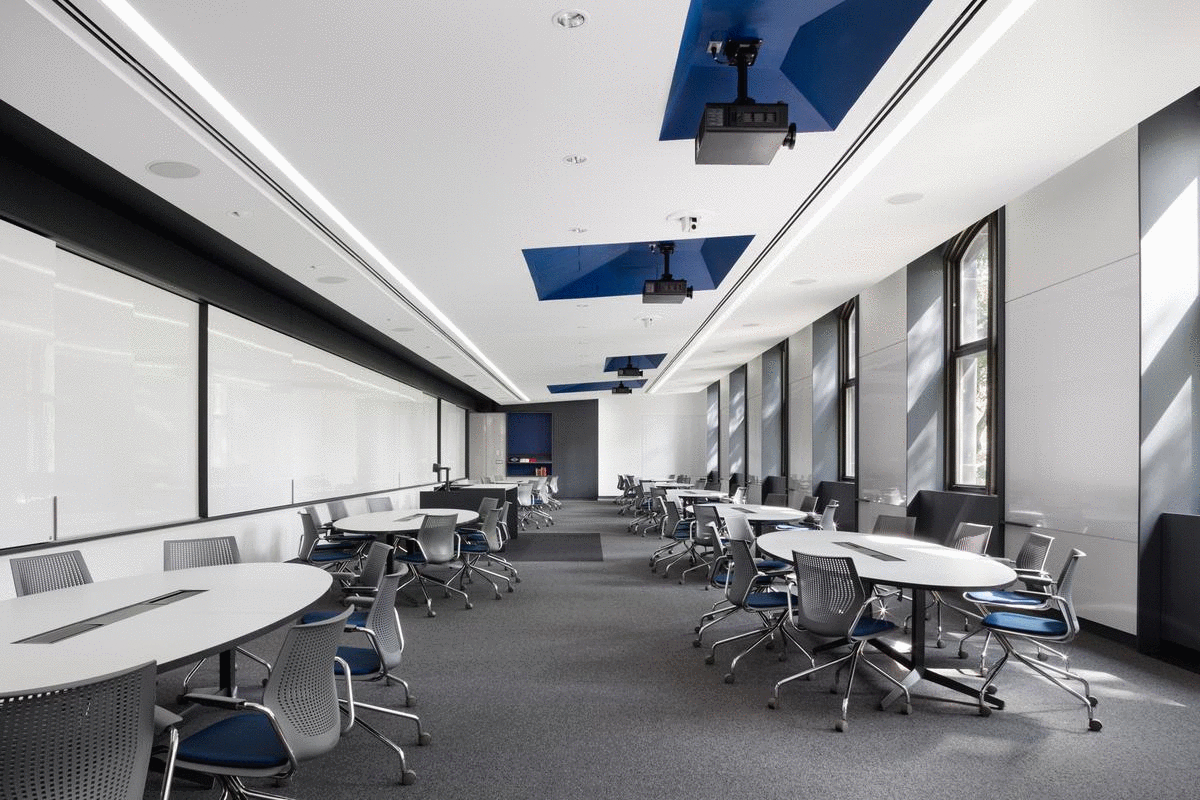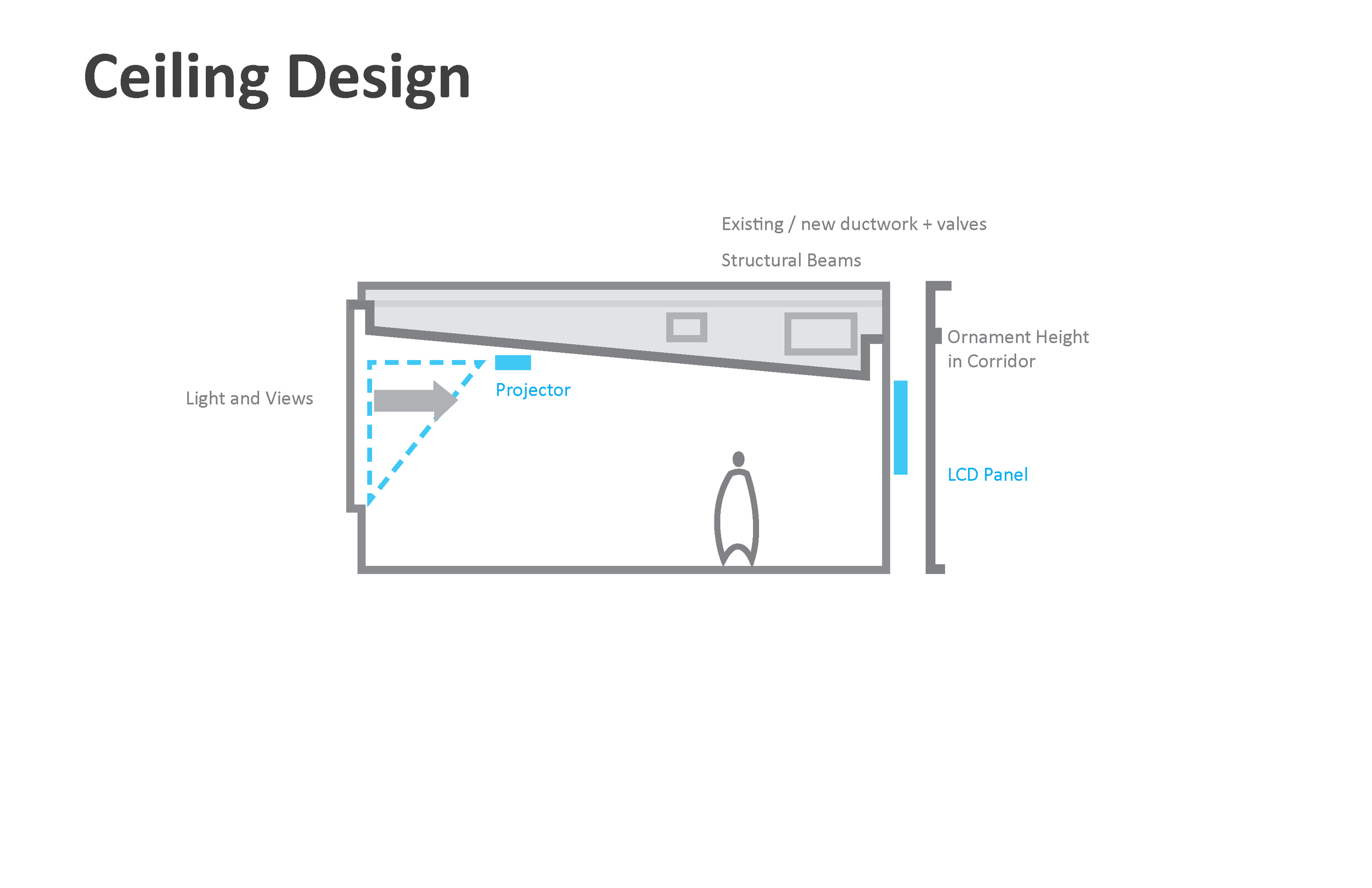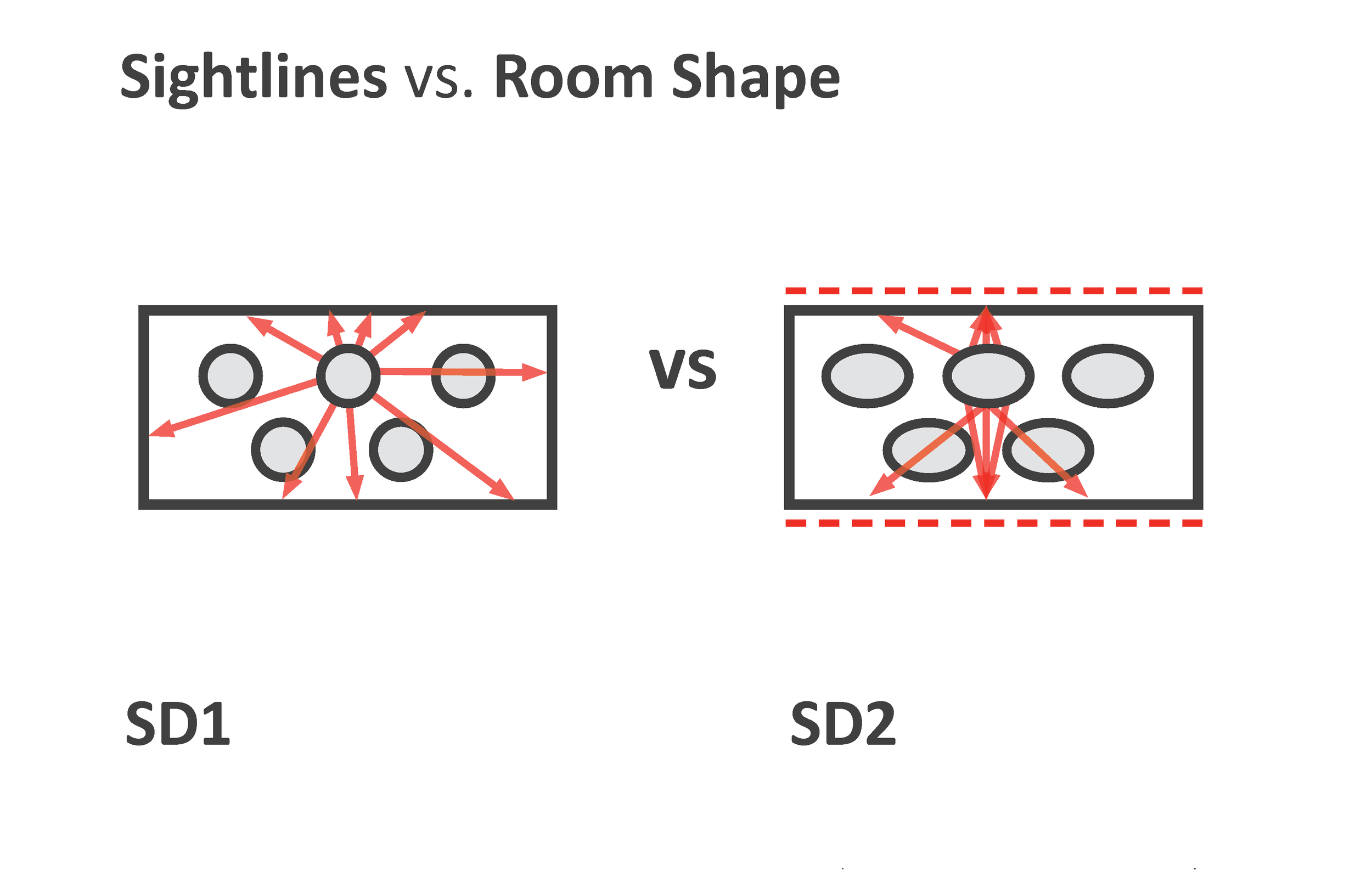














Your Custom Text Here
2017 Brooklyn AIA Merit Award Winner
Educational institutions must constantly evolve their pedagogical approach to meet or sometimes define how their respective discipline confronts the modern world. An old engineering library at the University of Pennsylvania was no longer being used in a meaningful way as an informational repository having been replaced by the accessibility of the internet as a research tool. Re-evaluating how valuable space is used, the Engineering school seeks to create an innovative teaching space for the STEM (Science, Technology, Engineering, Math) driven courses within the school.
Based on research that originated at North Carolina State University, the library space has been designed to facilitate"SCALE" (Student-Centered Activities for Large Enrollment) or "Active Learning" type teaching. This teaching method requires students to evaluate lecture content online in advance of the course meeting time. The class, with 90 students, is then organized around 9 person tables where multiple instructors engage the student in collaborative problem solving based on the previously reviewed lecture content. A sophisticated suite of technology enables for small scale digital work (laptops, tablets) as well as larger scale instruction to showcase examples of good solutions to the problems given.
While many examples of these spaces exist - there has been a conspicuous lack of design consideration given for how the classroom functions and feels when it is not used for such group work.
The new Active Learning Classroom for Penn Engineering builds on the raw power of the existing 120' long room with 16' ceilings that possesses a row of massive windows that look out on one of the many tree-lined pedestrian walks at Penn. The design integrates technology, instruction boards, and instruction materials in a seamless way to enable the classroom to fold away quietly to enable the room to be used for large scale meetings, studying, or other group meetings.
Natural light has been maximized by tilting the ceiling upward to the head of the window in a gentle manner and recessing projectors and cameras to eliminate the impact of these devices visually.
Philadelphia, PA
Completed 2015
3200 SF
Photography by Devon Banks Photography
(corridor photo by Don Pearse Photography )
2017 Brooklyn AIA Merit Award Winner
Educational institutions must constantly evolve their pedagogical approach to meet or sometimes define how their respective discipline confronts the modern world. An old engineering library at the University of Pennsylvania was no longer being used in a meaningful way as an informational repository having been replaced by the accessibility of the internet as a research tool. Re-evaluating how valuable space is used, the Engineering school seeks to create an innovative teaching space for the STEM (Science, Technology, Engineering, Math) driven courses within the school.
Based on research that originated at North Carolina State University, the library space has been designed to facilitate"SCALE" (Student-Centered Activities for Large Enrollment) or "Active Learning" type teaching. This teaching method requires students to evaluate lecture content online in advance of the course meeting time. The class, with 90 students, is then organized around 9 person tables where multiple instructors engage the student in collaborative problem solving based on the previously reviewed lecture content. A sophisticated suite of technology enables for small scale digital work (laptops, tablets) as well as larger scale instruction to showcase examples of good solutions to the problems given.
While many examples of these spaces exist - there has been a conspicuous lack of design consideration given for how the classroom functions and feels when it is not used for such group work.
The new Active Learning Classroom for Penn Engineering builds on the raw power of the existing 120' long room with 16' ceilings that possesses a row of massive windows that look out on one of the many tree-lined pedestrian walks at Penn. The design integrates technology, instruction boards, and instruction materials in a seamless way to enable the classroom to fold away quietly to enable the room to be used for large scale meetings, studying, or other group meetings.
Natural light has been maximized by tilting the ceiling upward to the head of the window in a gentle manner and recessing projectors and cameras to eliminate the impact of these devices visually.
Philadelphia, PA
Completed 2015
3200 SF
Photography by Devon Banks Photography
(corridor photo by Don Pearse Photography )
Copyright Studio Modh Architecture P.L.L.C. | info@studiomodh.com | 347.460.2217